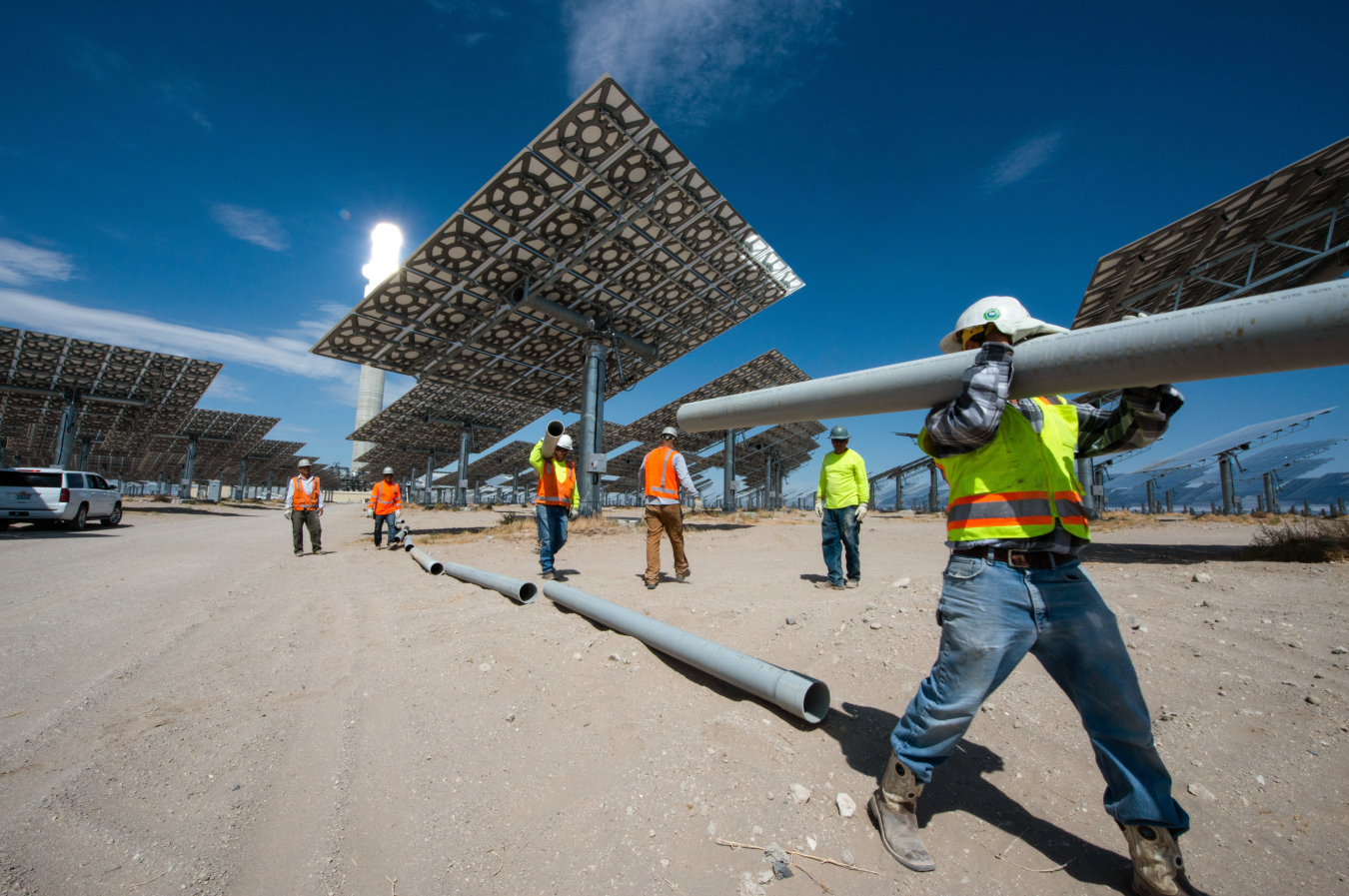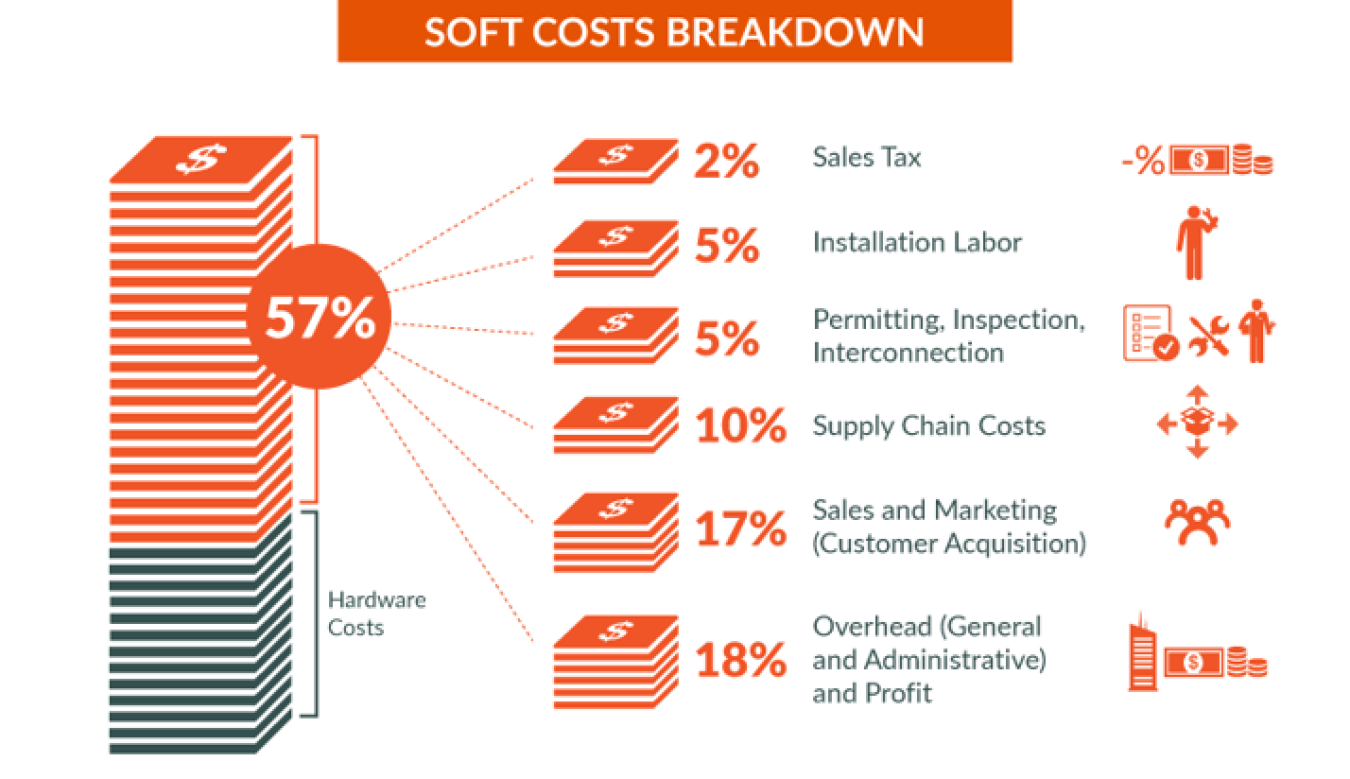
What are solar energy soft costs and why do they matter? Soft costs are the non-hardware costs associated with going solar. These costs include permitting, financing, and installing solar, as well as the expenses solar companies incur to acquire new customers, pay suppliers, and cover their bottom line. These soft costs become a portion of the overall price a customer pays for a solar energy system. While solar hardware costs have fallen in recent years, soft costs represent a growing share of total solar system costs. Because there are so many contributing factors, these costs can be hard to pinpoint and require a variety of solutions.

Source: U.S. Department of Energy “Solar Photovoltaic System Cost Benchmarks.” 8 kWdc residential rooftop system, no battery storage.
Roadblocks to Going Solar
Soft costs are driven up when processes for going solar are slow or inefficient. There isn't a single process or system to get solar customers online because there are many jurisdictions, utilities, and differing state and local laws involved. As a result, customers experience a lag time between when they buy a solar system and when it actually gets installed—a frustrating experience that also adds costs.
Red Tape
State and local governments that are new to solar or are developing solar adoption processes for the first time can have high costs due to inefficiencies in permitting, inspection, and grid interconnection, among other things—also known as “red tape.” Technical assistance programs can help to increase efficiency and decrease these costs by engaging experienced solar professionals to provide governing bodies the knowledge and tools they need to start their own programs.
Solar Companies and Industry Professionals
Streamlining the solar adoption process for solar companies also impacts soft costs. Software improvements can help solar companies save money by improving sales leads, better managing their portfolios, and making financing more accessible. These savings can then be passed along to customers. In addition, solar companies can’t grow without highly skilled workers. Minimizing training gaps allows solar companies to easily recruit new hires and expand at their own pace, which minimizes labor costs.
Solar also impacts professionals working in neighboring industries—such as real estate agents, code officials, and firefighters—who need to understand how solar energy affects their day-to-day jobs. Educating these professionals lowers costs by improving solar sales transactions and speeding up installations.
Affordable, Accessible Solar Energy
Increasing access to affordable solar energy for customers also plays a role in soft costs. Several factors limit certain customers from adopting solar, including the high cost and up-front expense of solar systems, the lack of competitive interest rates, and low credit scores. One strategy for addressing these barriers is community solar, where multiple participants subscribe to a single solar energy system. Enabling local financial institutions, such as community banks, credit unions, and community development financial institutions, to fund solar projects in their local areas can increase access to affordable solar energy for businesses and individuals in low- and moderate-income communities.
Learn more about:
-
 When it comes to installing solar, our resources can help you determine the best options.December 17, 2025
When it comes to installing solar, our resources can help you determine the best options.December 17, 2025 -

- SunShot
As the solar energy market expands, alternative business models like community solar are gaining popularity.April 7, 2025
-
 If you are an agricultural land owner and are considering your options to go solar, here are some resources to help you decide what’s best for you.May 29, 2025
If you are an agricultural land owner and are considering your options to go solar, here are some resources to help you decide what’s best for you.May 29, 2025 -
 To help consumers quantify the potential benefits of going solar, national laboratories and private companies have developed a number of tools.October 14, 2025
To help consumers quantify the potential benefits of going solar, national laboratories and private companies have developed a number of tools.October 14, 2025
Learn more about soft costs research in the Solar Energy Technologies Office, check out these solar energy information resources, and find out more about how solar works.

